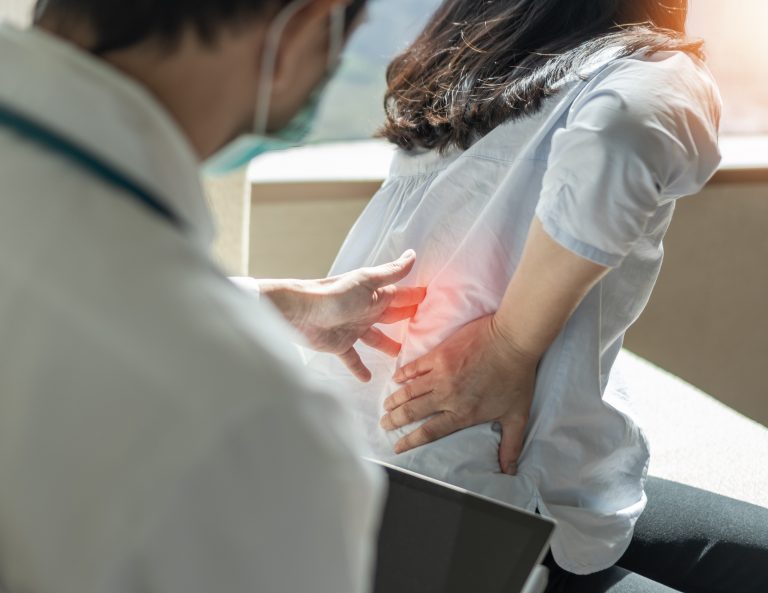What is Degenerative Disc Disease?
Degenerative disc disease is a spinal condition involving the gradual degeneration of spinal discs. This condition can manifest anywhere, but commonly affects the lower back. Over time, the discs and their protective elasticity degrade. Disc dehydration makes them weaker and less able to fully perform. This condition is common and many will experience it at some point in their life.
This condition often goes unnoticed. However, if the discs become deformed, it could lead to serious issues. Deformed discs compress the spinal cord or its nerve roots. This can lead to varying levels of pain.
Degenerative disc disease symptoms are often related to the disc height lost through degeneration, the amount of distortion found in a bulging disc, or the volume of herniated disc material. Reduced disc height also means that the vertebral opening is decreased in size, possibly trapping the spinal nerve.
The tighter the entrapment, the worse the symptoms are. Bulging or herniated disc material can also reduce the diameter between two spinal vertebrae. As a degenerating disc loses its ability to absorb stress and provide support, other parts of the spine become overloaded, leading to irritation, inflammation, back pain, fatigue, and muscle spasms.
Degenerative Disc Disease Pain
Degenerative disc disease can vary from slightly irritating to severely debilitating. Most patients suffer from underlying chronic low back pain with episodes of severe pain. Sitting, bending, and lifting worsen the pain more than standing or lying down, which are positions that can relieve stress on the disc space.
In addition to an aching back degenerative disc disease symptoms may also include numbness and tingling in the legs if the disc degeneration is located in the lower spine. Pain in the neck, shoulder blades, arms, and hands may be present when a degenerating disc is located in the cervical spine. Thoracic pain radiates along the rib cage and occasionally into the abdomen.
Conservative Treatment Options
After a diagnosis of this condition, your doctor will suggest a collection of conservative treatment methods. Your doctor will recommend a few options to see best results. Some of the most common conservative treatments are:
- Physical Therapy: Physical therapy is an important part of treatment. It works to strengthen the weak muscles and improve flexibility. This treatment encourages gradual growth, so use in adjunction with other pain management methods.
- Massage Therapy: Massage therapy is a great option for patients who have been experiencing pain for an extended period of time. This method works on releasing built up tension in painful areas.
- Nonsteroidal Anti-Inflammatory Drugs: Patients should use in moderation, these medications can help combat chronic pain. Many times, patients will experience swelling, and these anti-inflammatories can help to reduce swelling.
- Lifestyle Changes: Although not applicable to all cases, lifestyle changes can help to significantly reduce pain. This includes following a healthy diet, quitting smoking, and participating in doctor-approved physical activity.
Degenerative disc disease patients should try a collection of these conservative treatments. If months go by, and patients are still experiencing chronic pain, it could be time for surgery.
Degenerative Disc Surgery with Dr. Girton
At BEST Health System, our surgeons specialize in minimally invasive procedures. At our Cincinnati location, Dr. Girton performs spine surgery for a variety of conditions, including degenerative disc disease. To learn more about our services, and surgery with Dr. Girton, contact us today.
